A Compact House with No Internal Partitions
In F-House, located in northern Osaka, the rooms are not separated by walls, but rather by curtains that let light through.
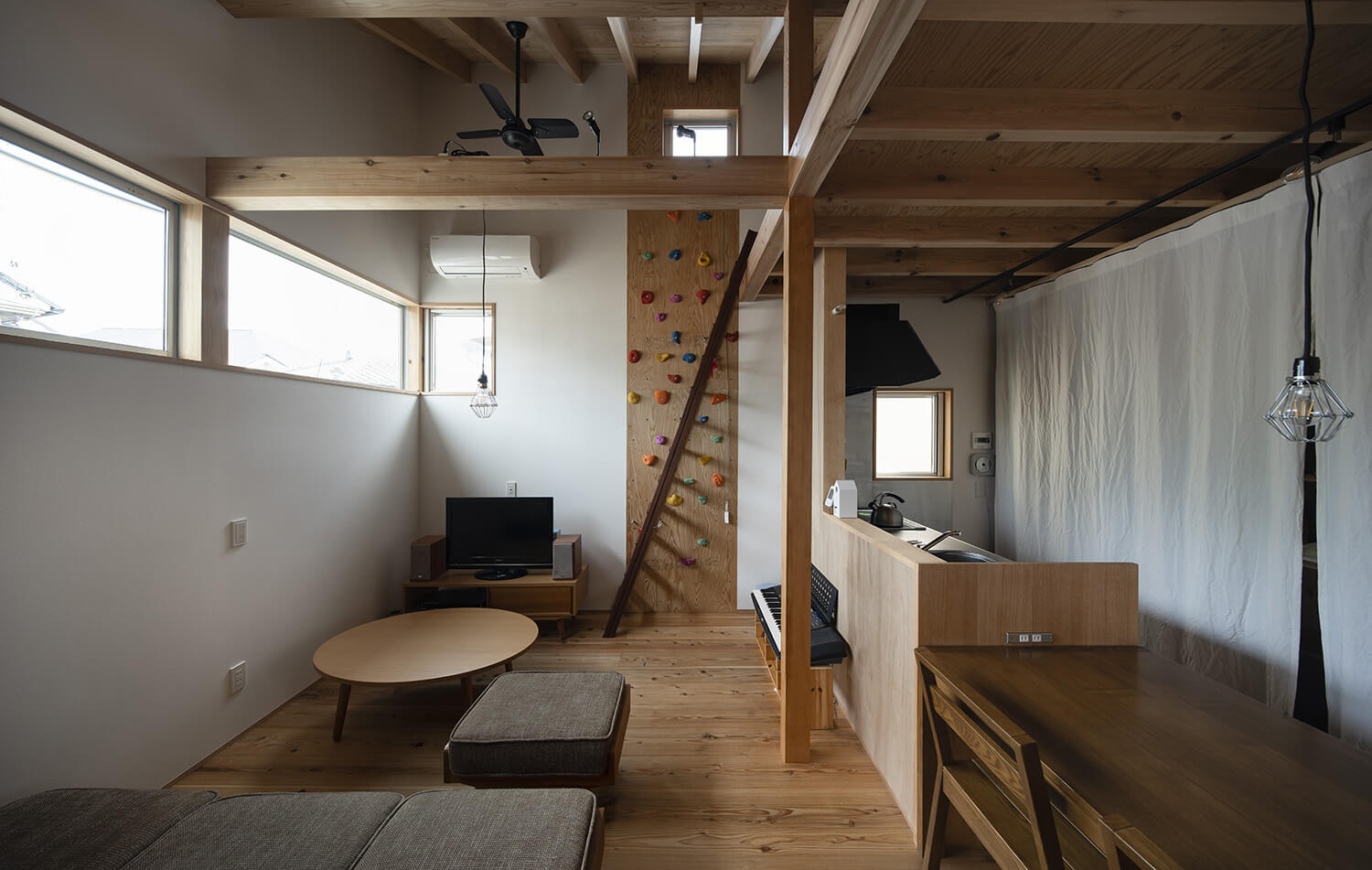
© Keishiro Yamada. YFT,YAMADA FOTO TECHNIX
The architectural firm Coil Kazuteru Matsumura had to juggle with constraints when building F-House in the city of Hirakata-shi in north-eastern Osaka. The regulations in force in this residential district set the maximum living space at 57 square metres. This is a somewhat small area to house a couple and their two young children, but one that is becoming increasingly normal in Japan where property is a source of tension, particularly in cities. This has led architects to develop buildings that defy the limitations on space, an innovation that architectural firm Atelier Bow-Wow christened Pet Architecture.
A framework made from Yoshino cedar
To adhere to the constraints, the firm designed a square-based two-storey house, where the organisation of living spaces is optimised. The house draws on one predominant element: wood. In addition to its framework, the façade of the residence is also made from Yoshino cedar, known for its durability. Inside, the wood of these conifers also features prominently in the floors, ceilings, and furniture. On the ground floor, the living and dining area and kitchen all form one room. To separate the space from the entrance and stairs, the architects created a custom-made wooden bookcase to act as a partition.
On the first floor, the bathroom is a separate space, but the parents’ and children’s bedrooms are open-plan. There are no solid boundaries between the areas; instead, the architects decided to separate them using curtains. These soft partitions divide the spaces into separate zones when privacy is required, without compromising on light. A touch of originality comes in the fact that one of the living room walls has a climbing wall for the children. This recreational element is reminiscent of Court House, created by the architects at Koizumi Sekkei, which is built around a basketball court.
F-House (2020), a residence designed by Coil Kazuteru Matsumura Architects, can be viewed on the firm’s website.
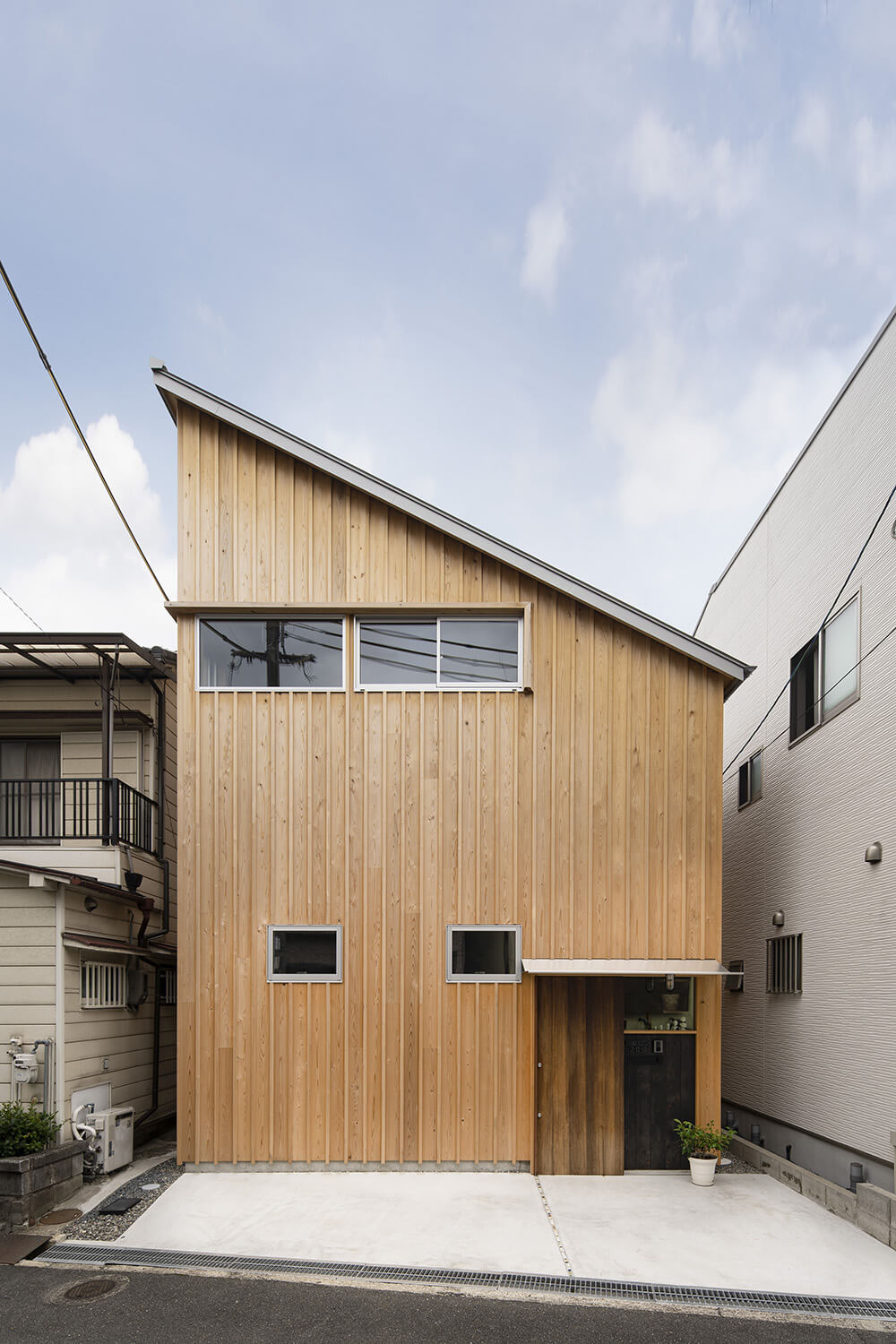
© Keishiro Yamada. YFT,YAMADA FOTO TECHNIX
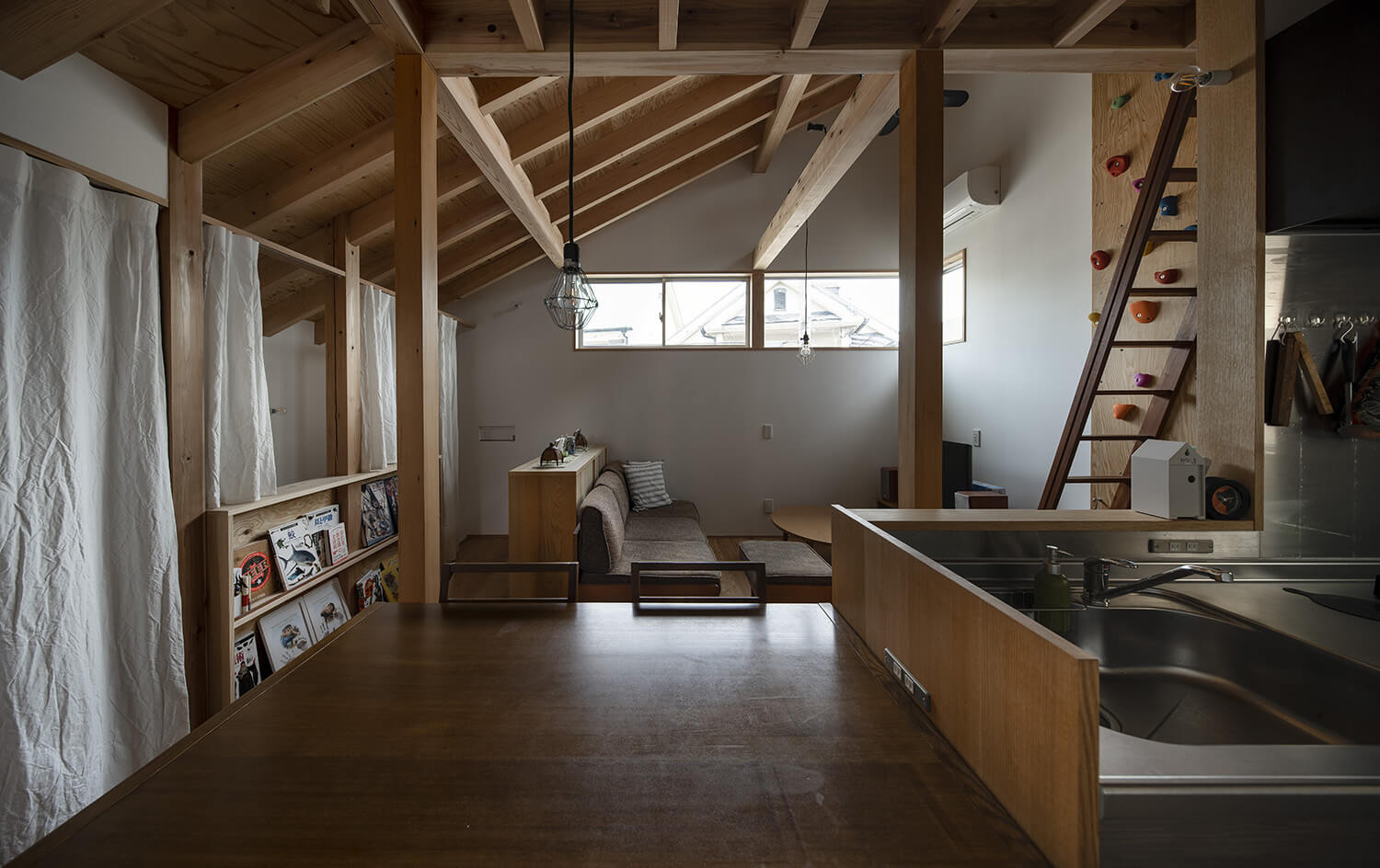

© Keishiro Yamada. YFT,YAMADA FOTO TECHNIX
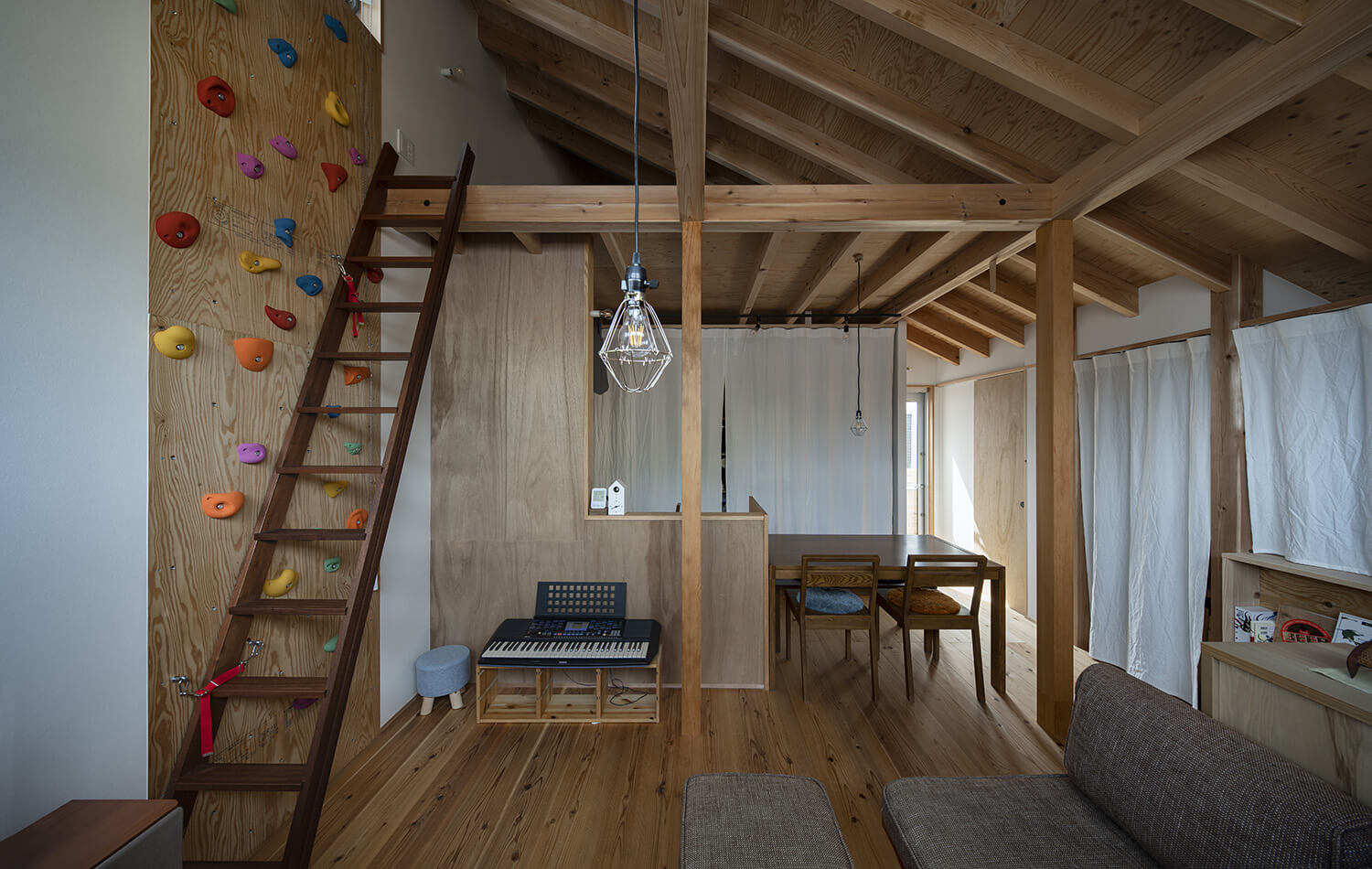
© Keishiro Yamada. YFT,YAMADA FOTO TECHNIX
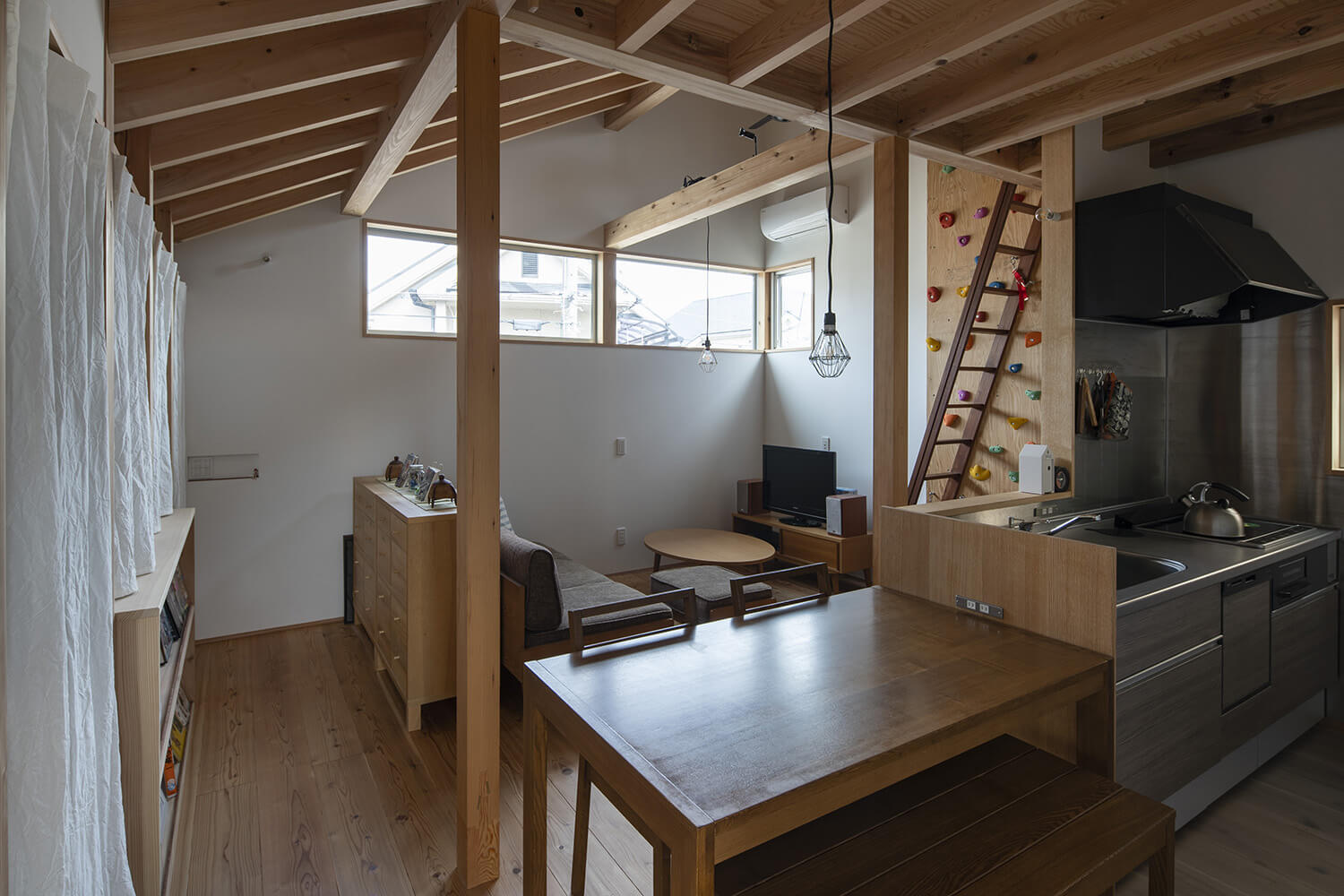
© Keishiro Yamada. YFT,YAMADA FOTO TECHNIX

© Keishiro Yamada. YFT,YAMADA FOTO TECHNIX
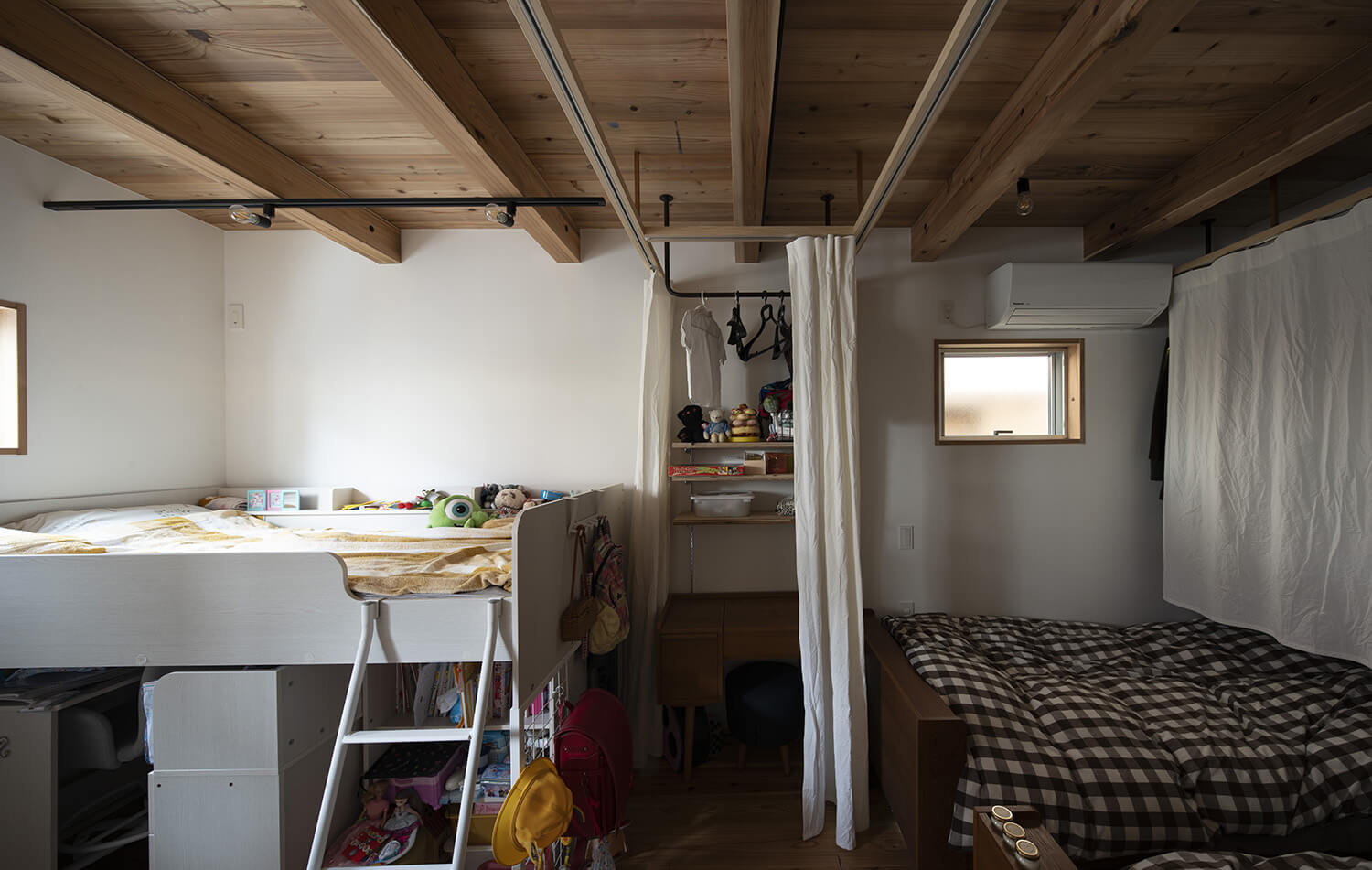
© Keishiro Yamada. YFT,YAMADA FOTO TECHNIX
TRENDING
-
The Tattoos that Marked the Criminals of the Edo Period
Traditional tattoos were strong signifiers; murderers had head tattoos, while theft might result in an arm tattoo.

-
Paris, Tokyo: Robert Compagnon
With his co-chef and talented wife, Jessica Yang, Robert Compagnon opened one of the top new restaurants in Paris: Le Rigmarole.
 3:31
3:31 -
The Story of Sada Yacco, the Geisha who Bewitched Europe
Described by Dazed magazine as the first beauty influencer, she has been restored to her former glory since 2019.

-
Ito Jakuchu's Naturalist Paintings
From 15 September until 14 October 2018, the Petit Palais showcased the artist's iconic ‘Images of the Colourful Realm of Living Beings’.

-
Chiharu Shiota, Red Threads of the Soul
Last year, more than 660,000 people visited the retrospective 'Chiharu Shiota: The Soul Trembles' exhibit at the Mori Art Museum.





